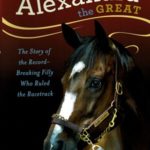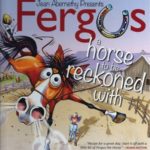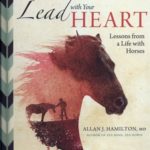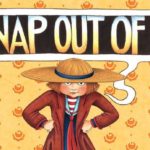What do excellent riders possess that most do not?

This is a question that many ask, but few have explored the sport of riding horses for an answer. Denny Emerson, an internationally known rider and one ofThe Chronicle of the Horse‘s “50 most influential horsemen of the Twentieth Century,” has devoted years to thinking about this. He has drawn the conclusion that there are seven factors that relate to becoming a world-class rider: personal drive, life circumstances, support network, knowledge, physical skill, character traits, and the horse.
This book examines these elements and offers insight into what can be changed and how to accept what cannot. Emerson provides real-life examples from his own riding career and is joined by 25 other riders who have attained “world-class rider” status. Order the book through Horsebooksetc., sit back and learn what it takes to excel in equestrian sports.
Here’s an excerpt from Denny Emerson in How Good Riders Get Good:
If your location is not where your sport of choice is happening, you either have to remain outside the mainstream of your sport, or you have to “go where the action is”–which is what I did in order to learn to become a three-day-event rider.
I went to watch my first three-day event, the 1961 Wofford Cup held at Groton House Farm in Hamilton, Mass. At the time I was majoring in English at Dartmouth College and had a summer job at a Morgan horse farm in Randolph, VT. But I was blown away by what those event horses and riders were doing on cross-country, and decided then and there that I was going to be a three-day rider.
In retrospect, I actually think I envisioned more than that. At that moment, I decided that I would become a champion three-day rider, and ride for the US Equestrian Team. Such is the arrogance and ignorance of youth! But remember, it had been less than a decade since, at age 13 and with zero background in distance riding, I had decided to ride in the GMHA 100.
At age 20 I had never jumped a fence. I knew absolutely nothing about dressage. I owned a Morgan show horse, not an event horse. I’d seen one event in my entire life. Not exactly ideal life circumstances for an aspiring champion three-day rider! But when I got back to my job at the Green Mountain Stock Farm at the end of the weekend, I announced to farm trainer Art Titus that I wanted to learn how to jump and asked him, “How do I do that?” Art’s answer: “Put up a jump one foot high, jump it until you get bored, then raise it.”
This was the beginning of my jumping career. I was quickly bored with one-foot jumps. I’d like to say that was because of my superior talent, but more likely it was because I was a 20-year-old boy with more ambition and guts and drive than common sense. So I just started jumping bigger fences. Because I’d ridden so many thousands of hours already, I had good balance and no fear. It didn’t take long before I felt comfortable and secure.
When I look at old photographs of my early jumping style, I realize that I was a poster boy for cardinal jumping sins: my stirrups were too long, my body position was too far forward, my eyes looked down and my lower legs swung back. But I didn’t care, because I was convinced that I was God’s gift to the equitation world. It’s great to be young and ignorant, two words that I’ve increasingly come to believe are almost synonymous!
Back at Dartmouth that fall, I did three things to start me off on my brand new career. I sold my Morgan. I bought two books on dressage, A.L. D’Endrody’s Give Your Horse a Chance and Waldemar Seunig’s Essence of Horsemanship. And I got in touch with Joe McLaughlin, who ran Hitching Post Farm, a girls’ summer eventing camp in Royalton, VT., and a 35 to 40-minute drive from Dartmouth. For the next two years, I spent every free moment at Hitching Post, riding every horse Joe would let me sit on. If I’d given my car its head, it would probably have driven there by itself.
I also discovered that H.L.M. Van Schaik, a member of the Dutch Olympic silver medal Grand Prix Show Jumping team for the 1936 Berlin Olympics, was living in Cavendish, VT–only a few miles from my parents’ farm in South Reading. In the spring of 1962 I bought a five-year-old Thoroughbred, Lighting Magic (“Dennis”), from Henry and Janet Schurink. With Mr. Van Schaik’s help, I started preparing him for the 1962 Green Mountain Horse Association Preliminary Level Three-Day.
Thirty horses competed, a huge entry in those early days of eventing. Steeplechase took place down in the valley floor, on the GMHA meadows. The second roads and tracks ran straight up the mountain to Lloyd and Stella Reeves’ Flying Heels Farm, and the cross-country course went up over the top of the mountain and down the other side. How we survived–a totally green event rider on a totally green five-year-old event horse–remains a mystery to this day, but 19 pairs finished the event, and Lighting Magic and I were 19th.
My graduation from college in June 1963 was the point at which I made some choices that probably “opened the door” to other choices. This series of decisions resulted, 11 years later, in my standing in the arena at the Burghley (England) World Championship Three-Day Event with my teammates Don Sachey, Mike Plumb, and Bruce Davidson, receiving a gold medal from Great Britain’s Prince Philip and hearing the “Star Spangled Banner” on the arena speaker as the US flag was raised.







